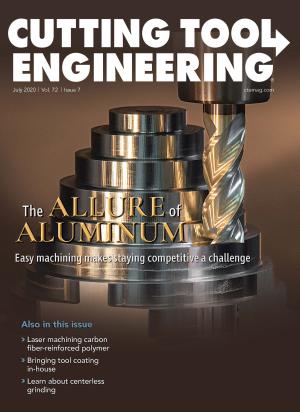On my first day at my machine shop, I had money in the bank, jobs on the floor, an experienced crew, working machines and customers. Everybody knew what they needed to do, and we had tooling for every job. Better yet, I made money on each job. There was no “I have to buy $100 in tools to do a $200 job” to suck up all the profit and then some. This may sound like a shop fantasy. But I was able to do it because I bought an established, working shop, which was far easier than starting one from scratch. I know this because I twice had tried to start a business by myself.
When I worked for a large defense contractor, I traveled the country checking on jobs subcontracted to family-owned shops. I saw families doing very well for themselves, and I wanted that for my family too. So I formed a company nearly 25 years ago. As a degreed engineer, I began with a business that required almost nothing except a professional engineering license: a manufacturing engineering consultancy. It went well, and I made more money than when working for someone else. However, the travel and time away from home were hard on my young family. It didn’t make sense to risk losing the people I was trying to do something good for, so when a client offered a permanent job to me, I took it.
For my second attempt six years later, while still employed, I chose to start a shop so I would not have to travel frequently. I rented a space and began the grueling task of calling on customers, planning and running jobs, packaging and delivering, programming and purchasing tools. I found that profits mostly went toward buying tools. Also, I was away from my family in evenings. I reached a point at which the business provided 30% to 50% of my salary, but my waking hours were 100% gone. It’s a moment that many “evening startups” experience. I had to decide whether to leave my day job and commit to the startup at perhaps half my regular wages or continue both endeavors and exhaust myself. In the end, I sold my business to an established competitor in my town.
As the saying goes, the third time was the charm. While working for another defense contractor, I passed a shop and was curious what it did. I believe in miracles, and this qualifies in my mind. The shop had been in business on the same site in Pittsburgh since 1906. The founding family owned the company, but no heir was interested in taking over. It had been for sale for six months and was about to be torn apart for an auction. The machines were a bit dated, but there were customers and experienced employees, and it was a profitable business.
The owners shared their previous five years of financial data. After three months of coming in weekly, reviewing operations and records and talking to banks — a period that professionals call due diligence — my family took money from our life savings and put down 20% on the business, including its facility. Four years later, we have updated the machinery, we are financially strong, and I see my family every night. I consistently work 10-hour days but only because I want to, and that still beats the 14-hour days of a startup.
If you want to own a shop, think about talking respectfully to older shop owners in your area. They may be looking to retire and cash in on their life’s work, and you may be the person who can provide an exit strategy.
Related Glossary Terms
- sawing machine ( saw)
sawing machine ( saw)
Machine designed to use a serrated-tooth blade to cut metal or other material. Comes in a wide variety of styles but takes one of four basic forms: hacksaw (a simple, rugged machine that uses a reciprocating motion to part metal or other material); cold or circular saw (powers a circular blade that cuts structural materials); bandsaw (runs an endless band; the two basic types are cutoff and contour band machines, which cut intricate contours and shapes); and abrasive cutoff saw (similar in appearance to the cold saw, but uses an abrasive disc that rotates at high speeds rather than a blade with serrated teeth).


